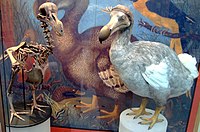
Photo from wikipedia
Introduction: To investigate the healing process of the harvested patellar tendon at 12±2 and 24±2 months following Bone-Patellar-Bone (BTB) Anterior Cruciate Ligament (ACL) reconstruction. Methods: 30 football players were enrolled… Click to show full abstract
Introduction: To investigate the healing process of the harvested patellar tendon at 12±2 and 24±2 months following Bone-Patellar-Bone (BTB) Anterior Cruciate Ligament (ACL) reconstruction. Methods: 30 football players were enrolled in our study and examined at 12±2 and 24±2 months postoperatively. Donor and contralateral tendons evaluated with a high frequency ultrasound transducer. The maximum anteroposterior (MAP) and maximum transverse (MT) diameters of the patellar tendon and associated defect at the site of the tendon incision measured at its proximal, middle and distal thirds. The presence of vascular flow was examined with Doppler imaging. Echogenicity of the patellar tendon defect was graded as low, mixed or normal compared to the contralateral tendon. Results: There was no statistically significant difference between the mean MAP and MT diameters of the donor tendons at 12±2 and 24±2 months postoperatively (P>0.05). The mean MAP and MT diameters of the patellar tendon defect at 24±2 months were significantly smaller compared to 12±2 months postoperatively (P<0.01). The mean MAP diameter of the harvested tendon was significantly greater at all measured sites in comparison to the contralateral tendon at 12±2 and 24±2 months postoperatively (P<0.01). There was no statistically significant difference between the mean MT diameters of the donor and healthy tendons at 12±2 and 24±2 months postoperatively (P>0.05). At 12±2 months, the mean MAP diameter of the patellar tendon defect was 4.0±2.1 mm, 4.7±2.8 mm and 4.1±2.4 mm at the proximal, middle and distal third of the tendon respectively. The mean MT diameter of the defect was 3.3±2.2 mm (proximal third), 2.9±1.6 mm (middle third) and 2.1±0.9 mm (distal third). 2 of tendon defects showed low echogenicity, 6 mixed echogenicity, 2 patients normal echogenicity. At 24±2 months the mean MAP diameter of the patellar tendon defect was 0.3±0.3 mm, 0.4±0.4 mm and 0.3±0.3 mm at the proximal, middle and distal third of the tendon respectively. The mean MT diameter of the defect was 0.3±0.3 mm (proximal third), 0.2±0.2 mm (middle third) and 0.2±0.2 mm (distal third). 27 of patients demonstrated normal echogenicity, 1 low echogenicity, while 2 mixed echogenicity. No tendon exhibited any signs of neovascularization at 12±2 and 24±2 months postoperatively. Conclusions: Patellar tendons after BTB ACL reconstruction were characterized by increased thickness at 12±2 and 24±2 months postoperatively. Solid healing were evident in 2 patients by 12±2 months and in 27 by 24±2 months. No inflammatory changes were observed at 12±2 and 24±2 months postoperatively. picture 1 ultrasonographic image of patellar tendon picture 2 ultrasound
Journal Title: Orthopaedic Journal of Sports Medicine
Year Published: 2017
Link to full text (if available)
Share on Social Media: Sign Up to like & get
recommendations!